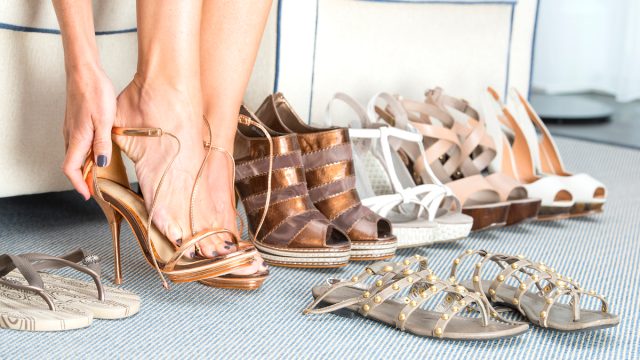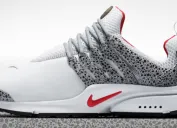6 Mistakes You're Making When Wearing Heels in the Summer, Podiatrists Say
Heels can be tough on your feet any time of year, but the warmer months have additional challenges.
You may love the look of high heels, but the consequences of wearing them aren't always pretty. In fact, experts say that wearing heels can cause a whole host of podiatric problems, from bunions to muscle strains and beyond. But the complications don't stop there—your hips, knees, ankles, and lower back can also suffer from your altered gait in high heels. With so many drawbacks, you may be wondering if your favorite pair of pumps is worth all the misery—especially in the summer when your feet get hotter and more swollen.
However, some podiatrists say that with a little forethought, you can minimize your risk of a problem while wearing heels throughout the warmer months. Read on to learn which six mistakes podiatrists say you're making while wearing heels in the summer—and how to fix them.
READ THIS NEXT: 6 Tips for Wearing Flip-Flops If You're Over 60, According to Stylists and Podiatrists.
6 Mistakes When Wearing Heels in the Summer
1. Not choosing heels with adequate cushioning and support
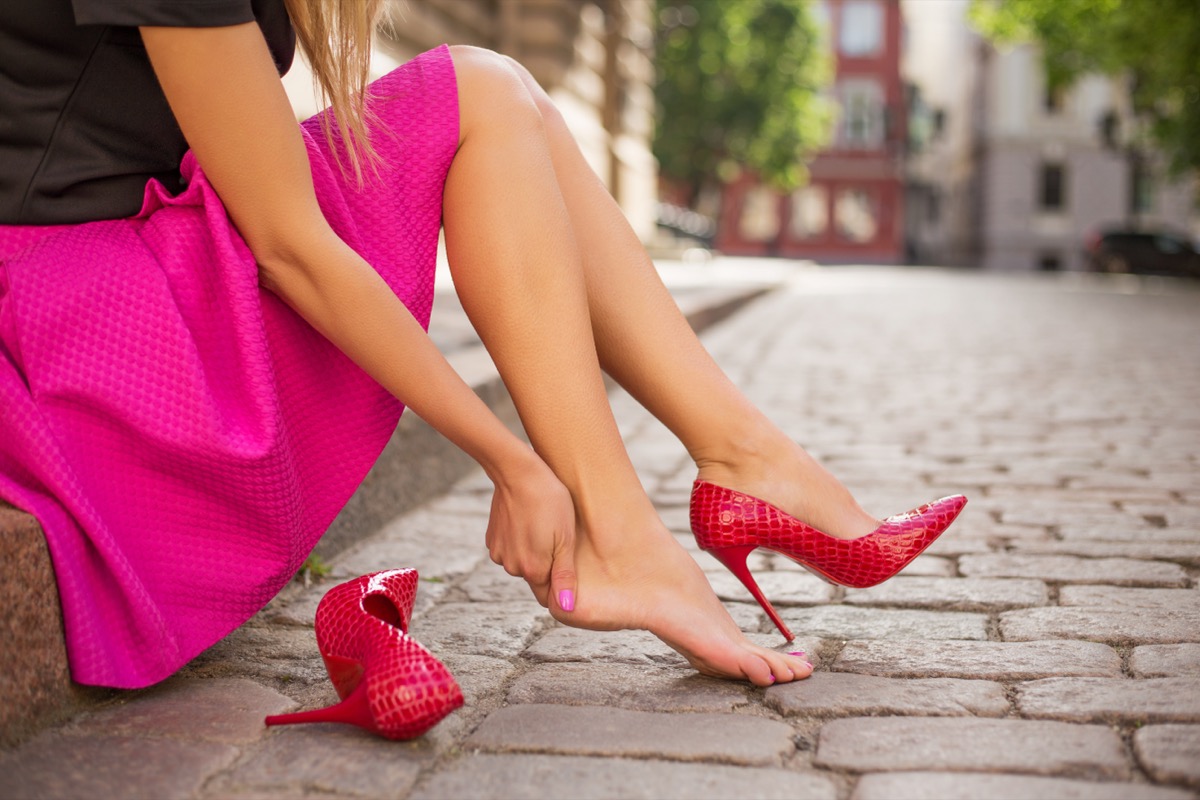
When it comes to fashion, many people pit form against function. However, experts say that just because you've chosen to wear heels for their look doesn't mean you have to sacrifice comfort or safety.
Gregory Alvarez, DPM, FACFAS, a podiatrist at the Ankle & Foot Centers of America, recommends choosing heels with adequate cushioning to avoid strain or injury. "Heels with thick soles provide more shock absorption than thinner ones, so opt for those whenever possible."
He adds that you should make sure your feet don't slide forward when you walk, especially if you're wearing open-toed heels in the summer. "Shoes with good arch support or a cushioned insole can help with this," Alvarez notes.
2. Wearing heels that are too high
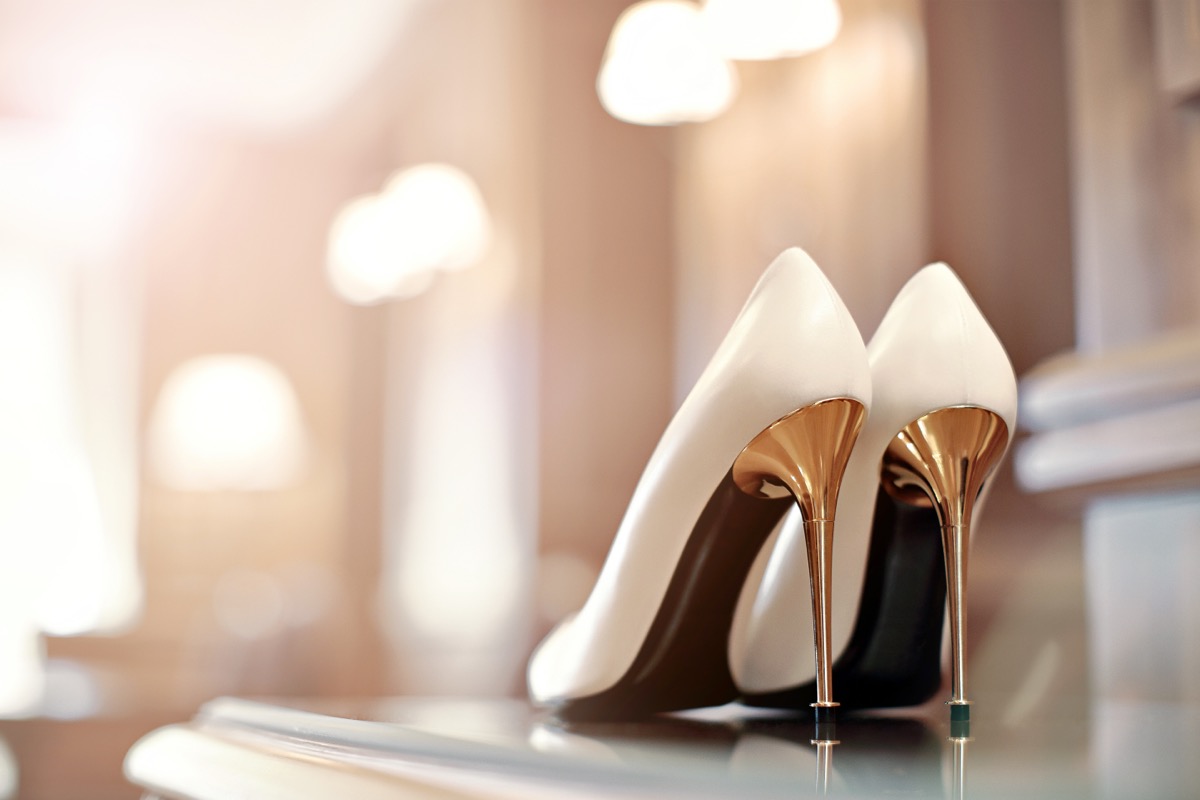
You may equate high heels with high fashion, but Alvarez cautions against adding too many inches.
"On hot summer days, you might be tempted to wear those extra-tall heels for added style—but higher-heeled shoes put more strain on your feet and legs, so it's best to stick to lower-heeled styles when the temperatures rise," he tells Best Life.
Some common issues associated with ultra-high heels are plantar fasciitis, arch strain, toe injuries, and sprained ankles, according to Greater Washington Advanced Podiatry.
"Heels under two inches high are best for regular wear," their experts advise. "If you want to go higher, consider heels that have a platform on the forefoot. This increases height while causing less distortion to the foot," they add.
READ THIS NEXT: The 5 Best Pairs of Heels to Wear With Jeans, According to Stylists.
3. Not taking breaks from wearing heels
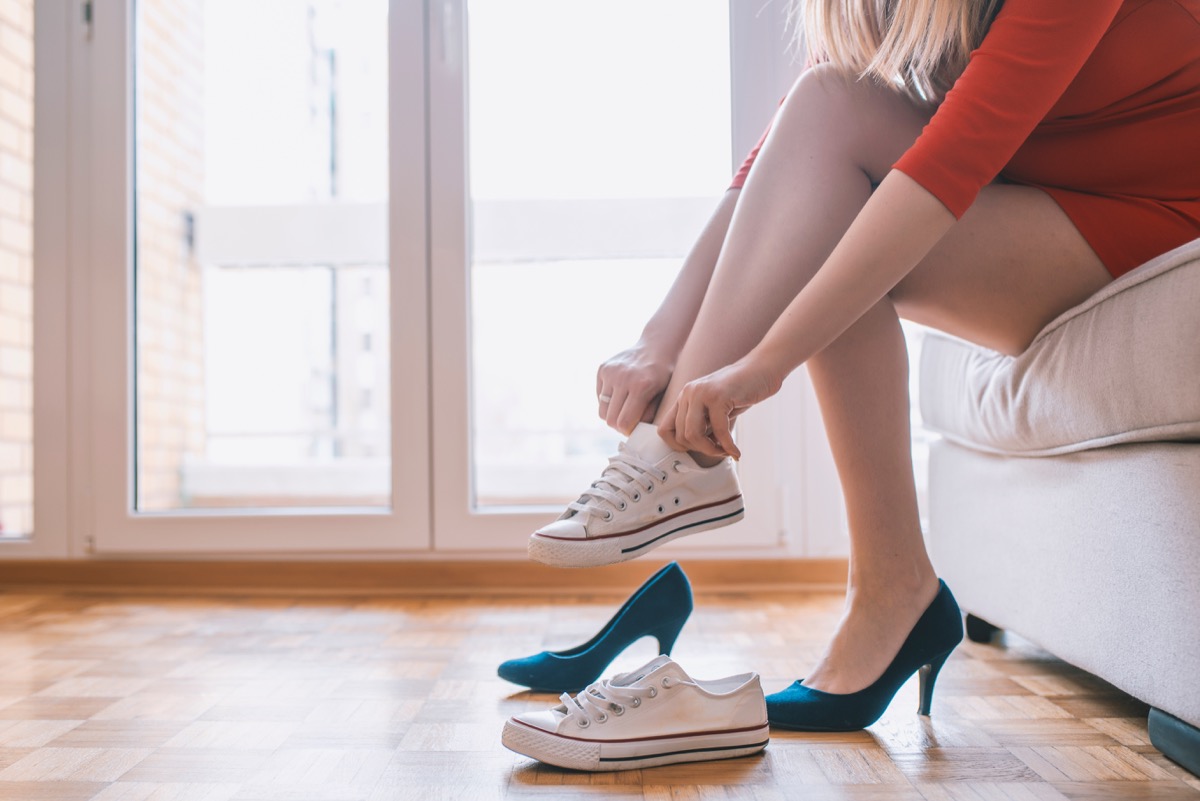
Heels aren't ideal for everyday wear, and you may even benefit from breaks during a single session, experts say.
"You should give your feet a break every hour or two whenever possible, as long periods of time in heels can lead to swelling and discomfort," suggests Alvarez. "Opt for flat shoes instead when you have the chance, and consider carrying around some comfortable flats with you if you know you'll be out all day in heels."
In the summer, you may need additional breaks from high heels, as your feet are more likely to become sweaty in warmer weather. The combination of excessive moisture and friction can lead to painful blisters when you walk.
4. Not stretching before and after wearing heels
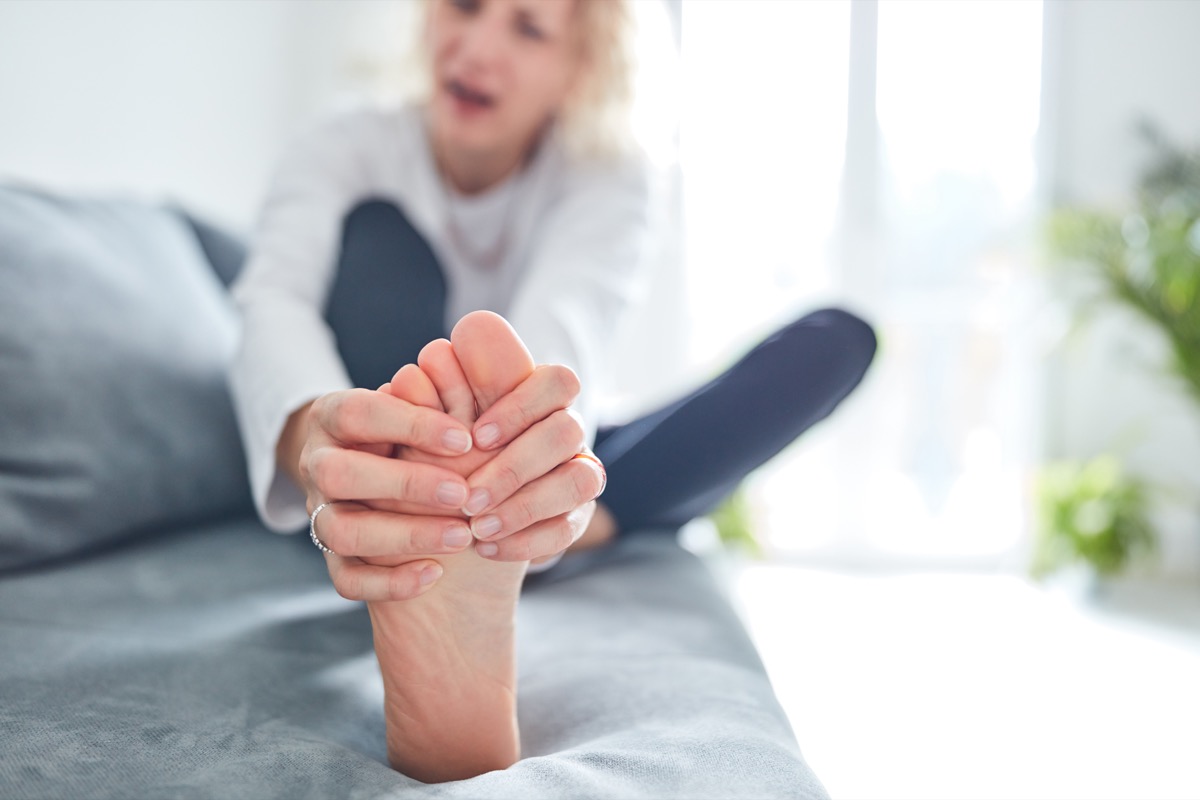
If you do decide to wear heels this summer, Alvarez says you can make the experience more comfortable by stretching before and after.
"Stretching your calves, ankles, and feet can help reduce discomfort from wearing heels—before you put them on, do a few calf raises or toe stretches to prevent stiffness," he says. "When you take off your shoes at the end of the day, give yourself a foot massage to relieve any lingering tension or pain."
For more style and health advice delivered straight to your inbox, sign up for our daily newsletter.
5. Forgetting to moisturize your feet

In the summertime, it's more important than ever to take care of your skin—and that includes your feet.
"Heat and sandals can dry out your skin more quickly in the summertime, so make sure you apply lotion to keep your feet hydrated and healthy," Alvarez suggests. "Pay special attention to areas that tend to be neglected such as the tops of your toes or heels where cracks may form if left untreated."
High heels can worsen cracks in your skin by putting extra pressure on the balls and heels of your feet. By giving them extra care between wearing heels, you may be able to offset these effects.
6. Wearing ill-fitting shoes

The last common mistake people make when wearing heels is choosing ill-fitting shoes. That's because oftentimes, there's a sizing gap between different styles, meaning your size in sneakers might differ from your size in heels.
"Poorly fitting heels can cause blisters, hammertoes, bunions, and other painful conditions—so make sure your shoes fit properly before you buy," says Alvarez. "If you find that the size you normally wear is too tight in a certain style of shoe, go up a half or full size to ensure maximum comfort."
Shoes that are too loose can also cause discomfort—and you may notice that heels you wore with thick stockings in the winter may suddenly fit loosely without them in the summer. Be sure to try them on at the start of the new season to make sure they're comfortable before committing to a full day's use.
